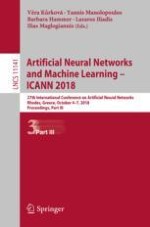2018 | OriginalPaper | Buchkapitel
Neural Model for the Visual Recognition of Animacy and Social Interaction
verfasst von : Mohammad Hovaidi-Ardestani, Nitin Saini, Aleix M. Martinez, Martin A. Giese
Erschienen in: Artificial Neural Networks and Machine Learning – ICANN 2018
Aktivieren Sie unsere intelligente Suche, um passende Fachinhalte oder Patente zu finden.
Wählen Sie Textabschnitte aus um mit Künstlicher Intelligenz passenden Patente zu finden. powered by
Markieren Sie Textabschnitte, um KI-gestützt weitere passende Inhalte zu finden. powered by
